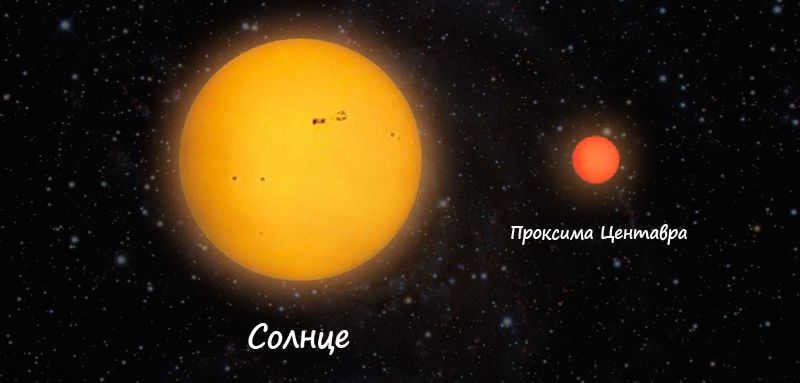
The mass of our Sun is 1.99 × 10 27 tons, which is 330,000 times greater than the mass of Earth. However, this is not the upper limit. The most massive star ever discovered, R136a1, has a weight equal to that of 256 Suns. On the other hand, Proxima Centauri, the star closest to us, has a luminosity that is just over one-tenth of the Sun’s. The mass of a star can vary significantly, but is there a maximum limit? And why is this question of great importance to astronomers?
Mass: The Key Characteristic of Stars
Mass is an essential and unique attribute of stars. By accurately determining a star’s mass, astronomers gain insight into its age and future destiny. Additionally, mass plays a crucial role in determining the strength of gravitational compression within a star, which is necessary for the ignition of a thermonuclear reaction and the emission of light. Therefore, mass serves as a defining criterion in classifying stars. Objects that are too lightweight, such as brown dwarfs, are unable to emit light effectively, while excessively heavy objects fall into the realm of extreme entities like quasars.
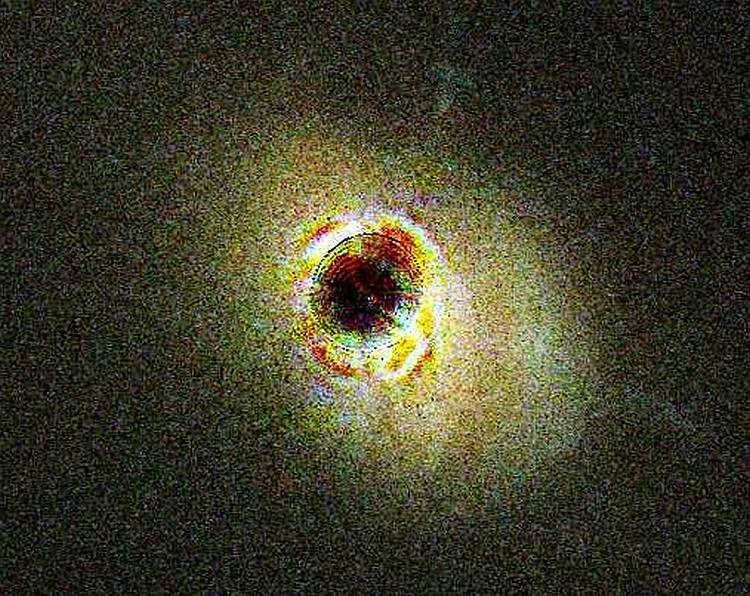

An image taken by a radio telescope displaying a quasar
Meanwhile, scientists are faced with the challenge of determining the mass of stars, as the only star whose mass is known for certain is our Sun. Fortunately, our Earth plays a crucial role in providing some clarity. By knowing the mass of our planet and its orbital speed around the Sun, we can use Kepler’s Third Law, refined by the renowned physicist Isaac Newton, to calculate the mass of the star itself. Johannes Kepler initially discovered the correlation between the distance from a planet to its star and the speed at which the planet completes its orbit around the star. Newton then expanded upon this formula by incorporating the masses of both the star and the planet. Astronomers often utilize a modified version of Kepler’s Third Law not only to determine the masses of stars, but also to analyze other celestial objects that together form a gravitational system.
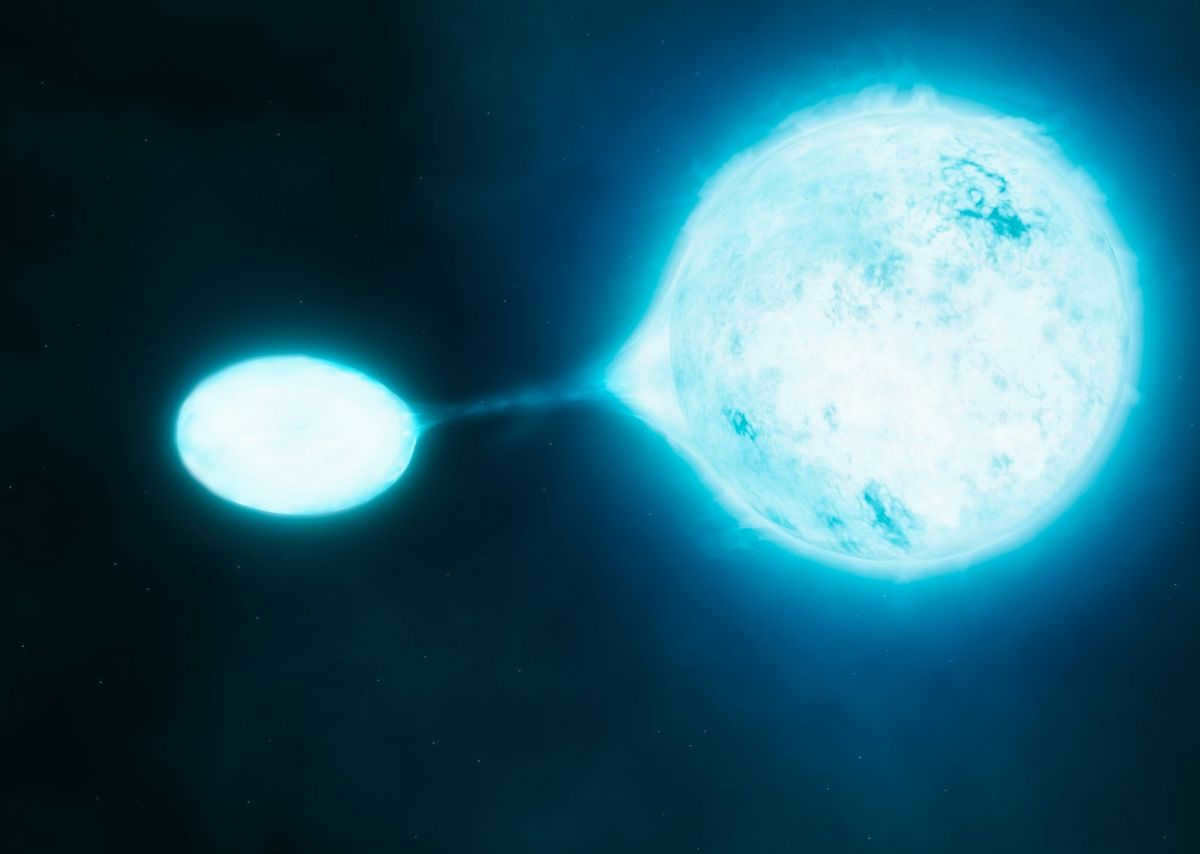
A system of two stars in close proximity depicted by an artist.
When it comes to determining the mass of individual stars without any discernible objects nearby that can be used for calculations, astronomers make a concession. Presently, it is understood that stars of the same spectral class possess equivalent masses. This understanding also assists scientists in establishing a connection between mass, luminosity, and temperature of a star, as these characteristics are all contingent on the intensity of nuclear reactions and the size of the star – both of which are direct indicators of mass.
The importance of a star’s mass
The significance of a star’s mass is not determined by its quality, but rather its quantity. For instance, our Sun, along with other Main Sequence stars, is primarily composed of hydrogen and helium, which are the two lightest elements found in nature. However, despite its composition, the Sun contains 98% of the total mass of the solar system!
One might wonder how such lightweight elements can come together to form massive celestial bodies. The process involves a combination of factors, including the absence of large cosmic bodies in the surrounding space, an abundance of material, and an initial force that triggers the attraction between the first kilograms of hydrogen and helium. In the nebulae and molecular clouds where stars are born, there are no obstacles preventing hydrogen and helium from accumulating. As a result, a significant amount of these elements accumulates, causing gravity to initiate the fusion of hydrogen nuclei. This fusion sets off a thermonuclear reaction, transforming hydrogen into helium.
Resources on the subject
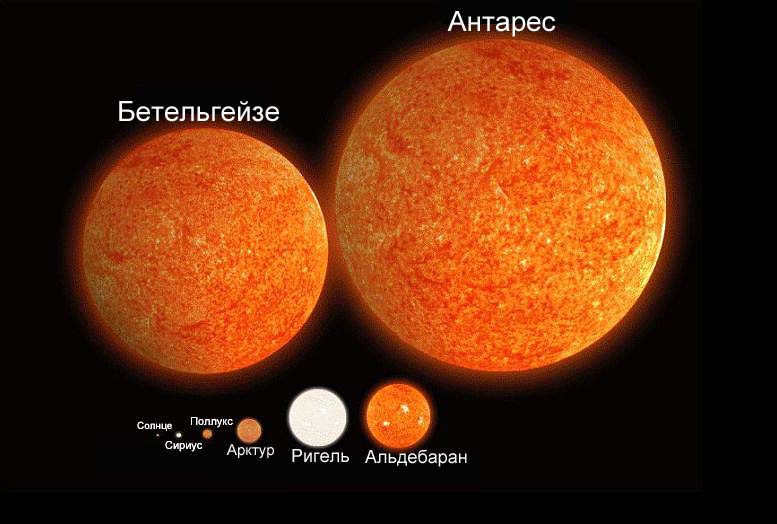
From a logical standpoint, the luminosity of a star increases as its mass increases. This is due to the fact that a massive star contains a larger amount of hydrogen, which serves as fuel for thermonuclear reactions, and the gravitational compression that triggers these reactions is stronger. An example of this is R136a1, the most massive star mentioned earlier in the article. It is 256 times more massive than the Sun and shines 8.7 million times brighter than our star!
However, there is a downside to being massive. Because of the intensity of the nuclear fusion processes, hydrogen burns at a faster rate within the stellar core. As a result, massive stars have relatively short lifespans on a cosmic scale, lasting only several hundreds or even tens of millions of years.
- A nebula in the Large Magellanic Cloud formed by stellar winds
- Previously, we discussed the fundamental physical processes associated with the mass of a star. Now, let’s explore which stars can be formed using these processes.
The mass limits of a star
- Although the universe is infinite, there are limits imposed by physical laws on celestial bodies. This is particularly true for complex cosmic objects like stars, which not only accumulate matter but also emit energy.
- Take, for example, radiation. To initiate it, a star must surpass 10-15% of the solar mass; otherwise, hydrogen will not undergo nuclear fusion. However, once the star’s core starts releasing energy, its mass accumulation slows down significantly.
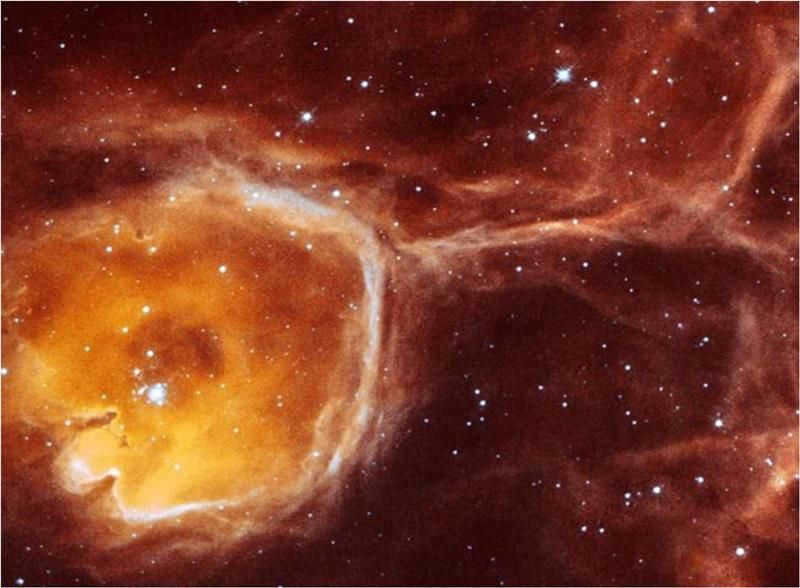
What is the reason behind this phenomenon? It is the fact that stars maintain their existence by maintaining a delicate balance between the forces of gravity, which have a tendency to compress the star into an extremely dense ball, and radiation, which counteracts this pressure. The strength of the energy release, as we are already aware, increases with the mass of the star. When a star reaches a mass of 150 times that of the Sun (3 × 10 29 kg), the radiation it emits will surpass the gravitational pressure. As a result, the star’s matter will be expelled into the surrounding space.
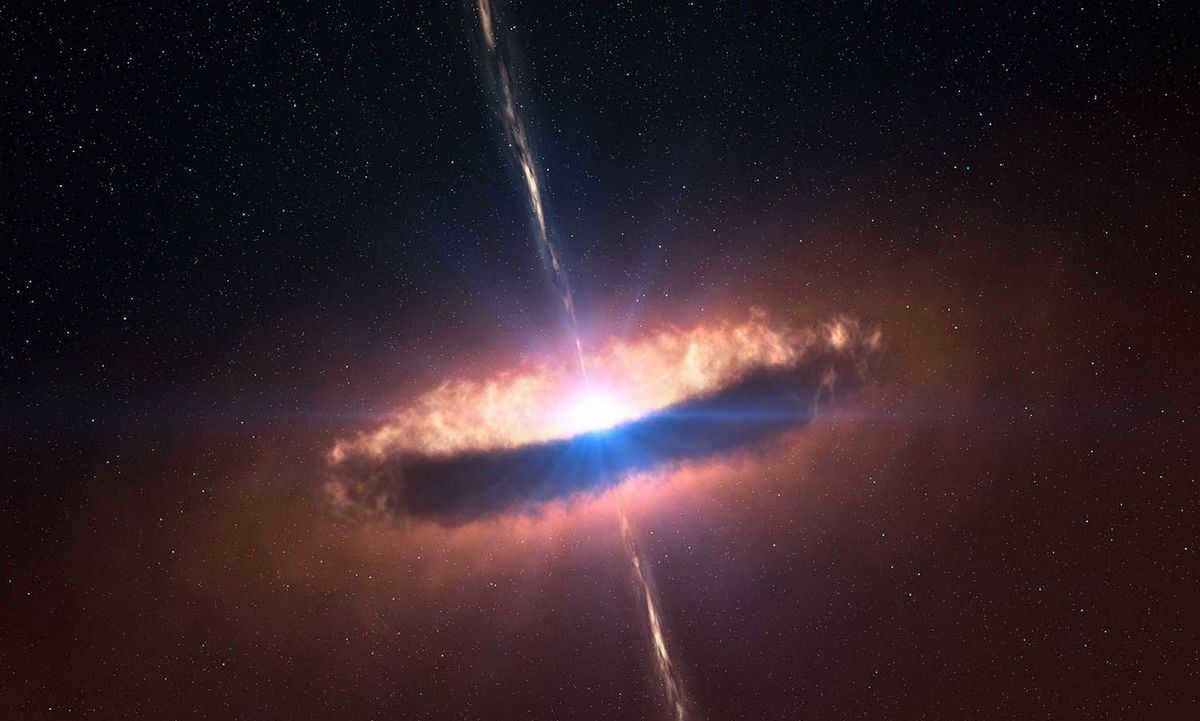
- It is worth noting that the dominance of gravitational compression over radiation will eventually lead to a tragic end for the star. This occurs when the star depletes its supply of thermonuclear reactions and undergoes a process of contraction, ultimately transforming into a white dwarf or undergoing a supernova explosion, which can result in the formation of a neutron star or even a black hole.
However, achieving a mass of 150 solar masses is already a significant accomplishment for a star. Stars are formed within nebulae through the process of spherical accretion. In simpler terms, stars gather spirals of matter from all directions. A star begins to emit light well before its formation is complete. However, once the mass of the star’s “embryo” surpasses 10 solar masses (1.99 × 10^28 kg), its radiation will push material away from the nebula, preventing further mass accumulation. Planets and comets are often created from the ejected matter of the nebula.
Does this imply that an average star can only reach a mass of 10 solar masses? And is there a mass limit of 150 solar masses? The answer to both questions is no. However, surpassing these limits requires unique circumstances.
Unique circumstances for exceptionally massive stars
The initial celestial bodies that emerged during the early stages of the cosmos were extraordinarily enormous in scale – their mass surpassed that of the sun by hundreds of thousands of times. Their lifespan was brief, lasting only a few thousand years, and their demise was characterized by a cataclysmic explosion that resulted in the formation of heavy elements such as gold. However, the question remains: how were these colossal stars able to accumulate such vast amounts of mass without succumbing to the overwhelming pressure of radiation?
Metallicity
The metallicity of a star is determined by the presence of elements other than helium and hydrogen. This factor influences the “transparency” of the stellar gas. When a star lacks metals, radiation can easily pass through the stellar matter. Consequently, the star requires a greater mass to achieve equilibrium with the force of gravity.
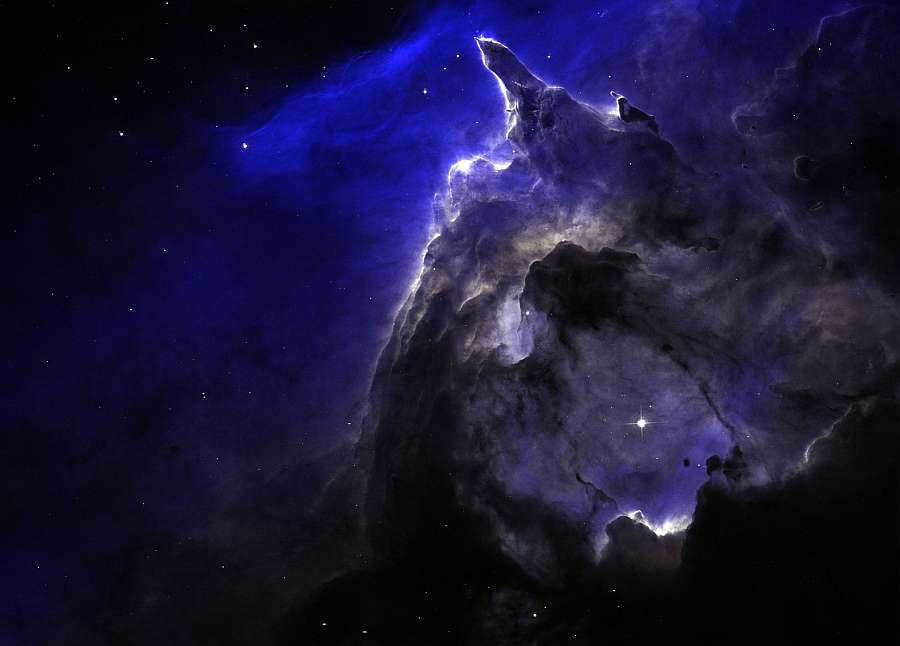
Population II stars, which emerged around 10 billion years ago shortly after the Big Bang, are primarily known for their low metallicity. In contrast, population III stars, like the Sun’s peers, have a significantly higher metallicity due to their formation from the remnants of previous stars that were rich in heavy elements. As a result, a star with a composition similar to the Sun’s cannot be more than 100 times more massive than the Sun, as their matter has a greater resistance to radiation.
Disk and competitive accretion
It can be observed that the constitution of a star is determined by its historical development. However, there exist stars that have acquired masses equal to or even exceeding 150 solar masses. How did they achieve this?
This requires a specific set of circumstances. Molecular clouds and nebulae do not constitute a uniform medium with consistent density and linear dimensions: they contain regions of various shapes and compositions. In many cases, a nebula extends like a disk – a portion of the protostar forming within it may extend beyond the nebula into empty space.
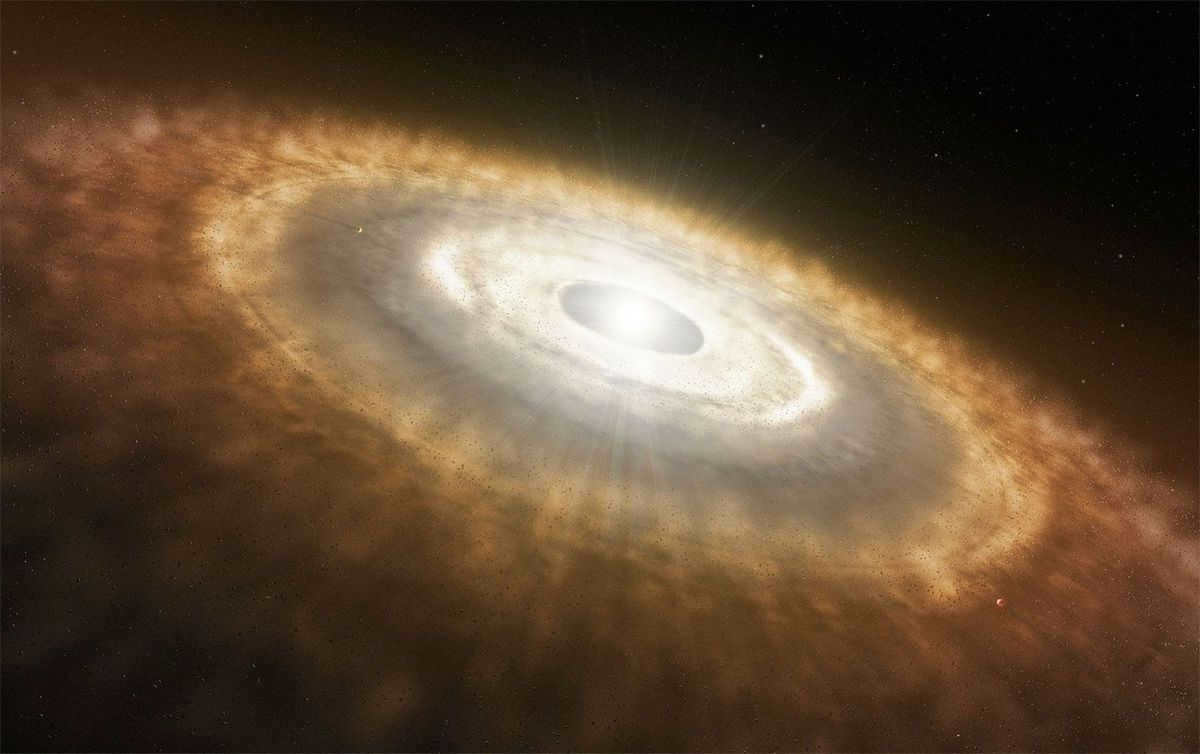
A protostar is able to undergo a unique form of accretion known as disk-type accretion. This process allows the star embryo to absorb matter from the surrounding nebula through a disk-shaped structure. Unlike other forms of accretion, the matter in this arrangement only comes into contact with a relatively small area of radiation. As a result, the star is able to continue absorbing helium and hydrogen from the nebula even when it is fully ignited. The limited amount of radiation on the accretion plane is not sufficient to repel the matter, allowing the star to sustain its growth.
However, that is not the extent of it. All celestial bodies – including newly formed ones – orbit the center of the galaxy. Furthermore, it is uncommon for a single star to be born in a vast nebula; typically, several stars are formed, and they immediately establish a gravitational connection between them. As a result, these stars traverse through the parent nebula, absorbing its matter through numerous micro collisions. This active process allows the star to accumulate a significantly larger amount of material compared to passive attraction. Due to this phenomenon, it is referred to as “competitive” accretion. A notable example of this type of star formation can be seen in the Pillars of Creation within the Eagle Nebula, although they were eventually destroyed by a supernova explosion.
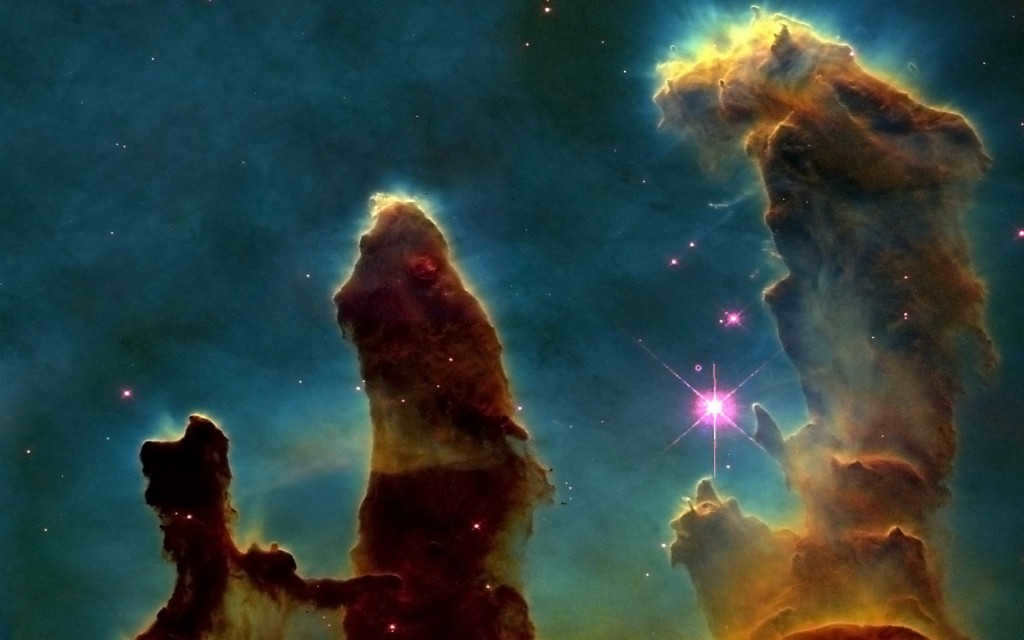
Merging and mutual absorption of celestial bodies
Finally, we come to the most fascinating aspect of star formation – the enigma of how stars acquire a mass surpassing the natural limit. It is a well-known fact that the paths of celestial bodies frequently intersect. This phenomenon is evident in any airless entity, such as our Moon, which bears witness to the countless impacts of meteorites.
Stars, due to their distance, have fewer encounters with each other. However, within star clusters – particularly during the formation phase – collisions are relatively frequent. The typical collision between stars results in cataclysmic explosions, scattering stellar plasma billions of kilometers away. However, if the stars approach each other on the right path, they can merge. This is how the star R136a1, which is too large even for its class of superhot and highly luminous Wolf-Rayet stars, came into existence.
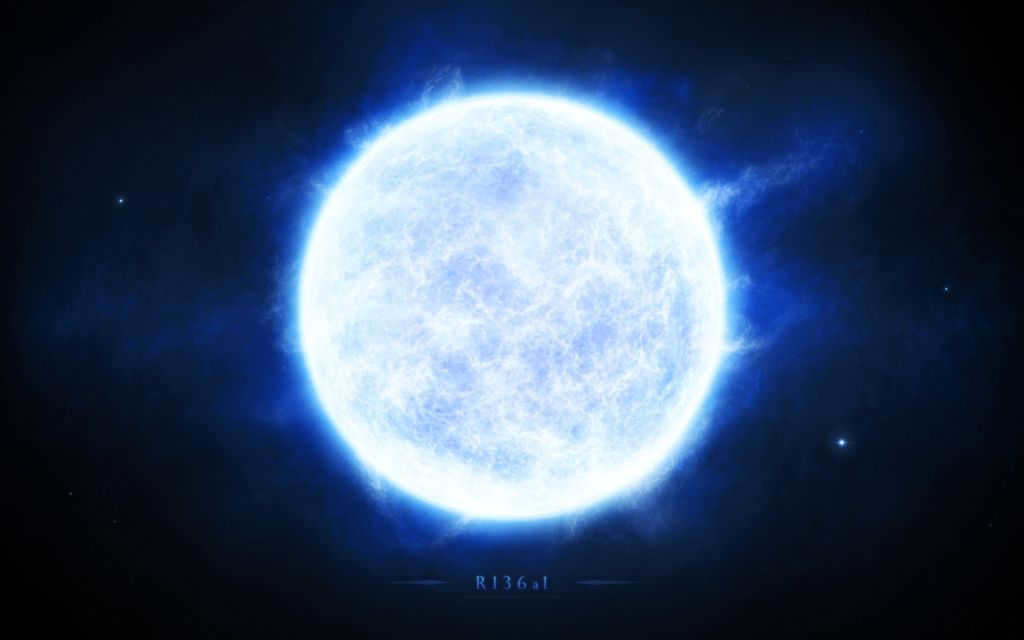
An artist’s depiction of R136a1
Star mergers are the most efficient mechanism for stellar mass growth. It is no coincidence that the most massive stars are found in close proximity to star clusters, where collisions are more likely to occur. Theoretically, the mutual absorption of stars can result in the formation of incredibly massive objects, with a mass exceeding tens of thousands of times that of the Sun. However, is there a limit to the size of these monstrous stars that can emerge from their parental luminaries?
According to scientists, the physical limit is believed to be around 500 thousand to 1 million solar masses. When a star reaches such a massive load of radiation force from nuclear reactions, it is unable to hold itself together and collapses into a hypernova of enormous size. However, gravity also behaves differently at these extreme masses. The titan star will start to divide into “mini” stars with a mass equivalent to 1000 Suns. It may disperse into a massive hot nebula or even explode into a complete stellar system composed of ordinary-sized stars. The outcome will depend on the presence of other large objects in the universe, with which the massive star will interact at distances of billions of kilometers.
If you enjoyed this post, feel free to share it with your friends!

In our 11th grade physics class, we learned that the Sun is a typical star among the 100 billion stars in the Milky Way galaxy. How do other stars compare to the Sun? What sets them apart? Which physical and chemical factors are essential in determining a star’s properties? Let’s take a quick look at the fundamental characteristics of stars, such as their size, mass, and composition.
Dimensions and Mass of Stars
When observing stars that are closest to Earth, it becomes evident that they vary in size. However, due to the vast distances separating us from most stars, their angular size cannot be directly observed. As a result, the main characteristics of stars are determined through indirect methods.
Calculations indicate that the smallest stars, known as white dwarfs, have diameters of approximately one thousand kilometers. On the other hand, the largest stars, known as red giants, have diameters reaching one billion kilometers, equivalent to the diameter of Jupiter’s orbit.
Furthermore, there are remnants of stars such as neutron stars and black holes, which have dimensions ranging from a few to tens of kilometers, but they do not emit light.
Estimating the mass of stars also primarily relies on indirect methods. The mass of stars can only be directly estimated in the case of double systems, as their masses depend on the parameters of their respective orbits.
Unlike sizes, the masses of stars exhibit much less variation. The smallest stars possess masses equivalent to around 10% of the mass of the Sun. On the other hand, the largest stars can reach up to 150 times the mass of our Sun. This discrepancy exists because if a protostar’s mass is too low, the gravitational force it generates will not be strong enough to initiate thermonuclear reactions within its core. Conversely, if the mass is too high, the energy released from these reactions will prevent the protostar from evolving into a star and instead result in its disintegration (in this scenario, a binary star system is formed).
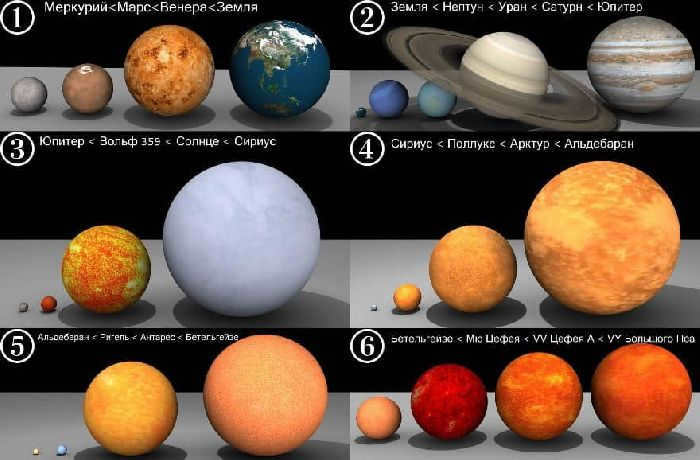
Stars’ Chemical Composition
Hydrogen is the most abundant element in the universe, accounting for over 90% of atoms. Stars are massive spheres of hydrogen where hydrogen is converted into helium in their cores. Helium atoms make up approximately 8% of all atoms in the universe.
In the cores of the most massive stars, helium undergoes fusion to produce elements such as lithium, carbon, and eventually iron. However, these elements combined constitute less than 1% of all atoms in the universe.
The fusion reactions required to create atoms heavier than iron require the input of energy, making them incapable of being the primary source of stellar energy. Additionally, atoms heavier than iron are synthesized in minuscule quantities.
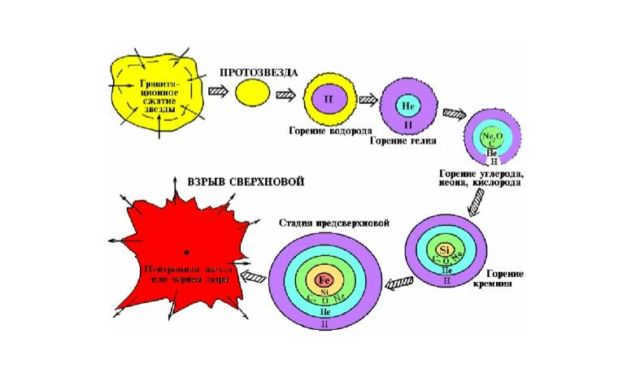
Stars’ Spectral Classification
Spectral analysis is the most informative method to study the composition and temperature of stars. Each chemical element has a unique spectrum, so by analyzing the spectrum of a star’s light, scientists can accurately determine its chemical composition.
The Sun is classified as a G2V star, meaning it is a yellow dwarf with a temperature of approximately 5200 K.
Other star classifications can also be based on the composition of the star, such as class S which indicates stars with higher levels of elements like zirconium, titanium, yttrium, or technetium. Additionally, lowercase letters are often used as additional indexes to indicate important features in a star’s spectrum. The table below provides an overview of the main spectral classes:
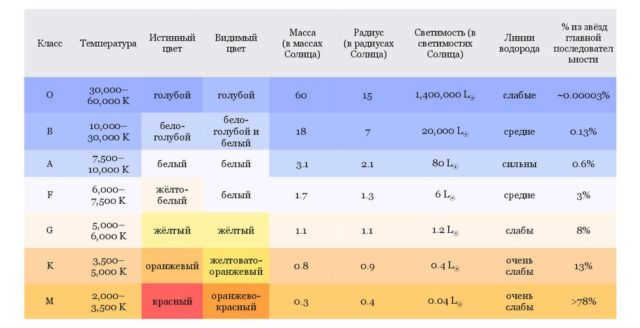
What knowledge have we gained?
Stars vary in size from a thousand to a billion kilometers in diameter and in mass from fractions to hundreds of times the mass of the Sun. In terms of their chemical composition, they consist mostly of hydrogen, which undergoes nuclear fusion to form helium in their cores. Additionally, there are trace amounts of other elements present. The temperature and chemical makeup of stars are evident in their spectra, which is why they are categorized into different spectral classes.

Indeed, celestial entities exhibit a variety of dissimilarities. One of the primary distinctions between stars lies in their dimensions, mass, and composition.
The Classification of Stars based on Size
In the vast expanse of the universe, stars can be categorized into several sizes, including small, medium, large, and even extra-large or gigantic.
However, the field of astronomy does not classify objects in such a manner. Instead, they are grouped together based on other shared characteristics, as most parameters and properties are interconnected.
If you require assistance in composing a research paper on this or any other topic, you can seek help from: https://peremena.com.ua/raboty/diplomnye-raboty-na-zakaz/.
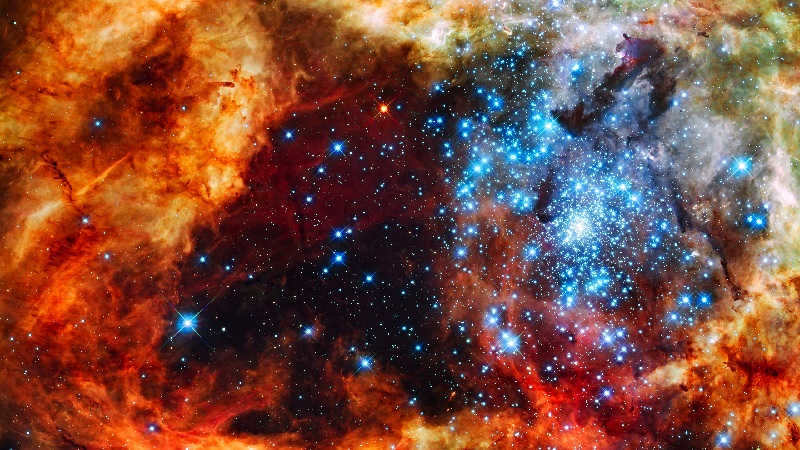
Stars Classification Based on Size
In reality, stars are categorized based on their size:
Indeed, there are also a few hypergiants – the brightest, most massive, and powerful celestial bodies. However, hypergiants are extremely rare within our universe. Despite their abundance, hypergiants have a relatively short lifespan, resulting in their scarcity.
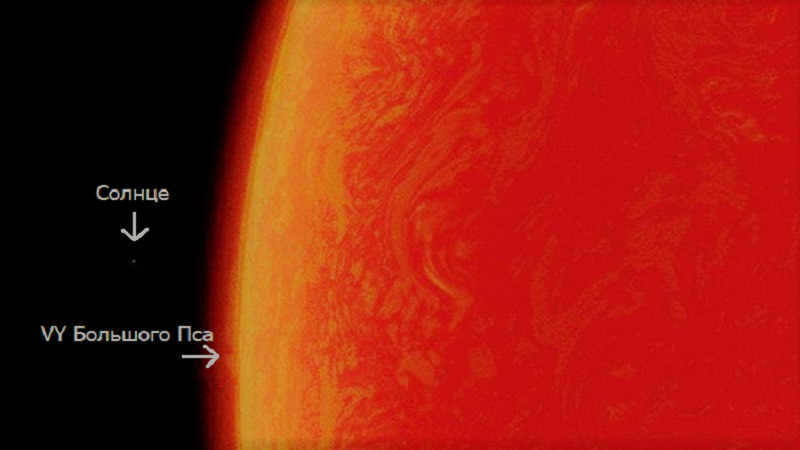
How to Determine the Size of a Star
There are three methods for determining the size of stars:
- Observation: By observing the eclipse of a star by the moon, its angular size can be determined. If the distance to the star is known, its actual size can be calculated.
- Using an optical interferometer: This specialized measuring device can measure the boundaries of an object, making the distance irrelevant when determining the size of a star.
- Theoretical calculation: The size of a star can be theoretically calculated using the luminosity formula. By knowing the luminosity and temperature of a star, its radius can be calculated.
How does the size of stars relate to their brightness?
The brightness of a star is determined by its size, as calculated using the following formula:


The luminosity formula is directly related to the radius of the star.
These two parameters are closely connected and dependent on each other.
It is challenging for us to comprehend the true sizes of celestial objects since they can vary from thousands to millions of kilometers.
Our primary celestial body, the Sun, is more than a million times larger than our planet. Therefore, attempting to compare the size of stars to the size of the Earth is both challenging and inappropriate.
To simplify the determination of the radius (size) of stellar bodies, astronomers commonly use a unit of measurement equivalent to the equatorial radius of the Sun, which is 696,392 kilometers.
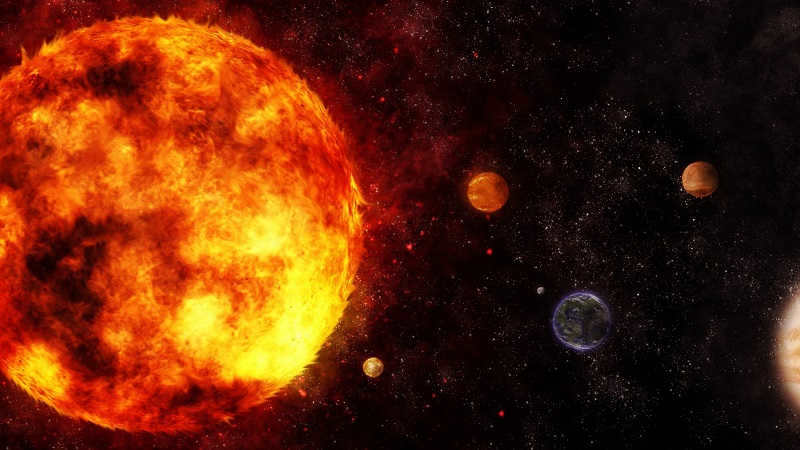
What are the dimensions of the tiniest stars?
Red dwarfs are renowned for their petite volumes and masses. Specifically, most of them possess a mass equivalent to half of that of the sun, and the radius of these luminaries is quite diminutive.
Additionally, there exist white dwarfs, which have a size comparable to that of the Earth. However, their density surpasses that of the Earth by nearly a million times.
Lastly, the smallest stellar representatives are neutron stars. They are a hundred million times smaller than our planet! Although in terms of mass and density, they surpass Earth.
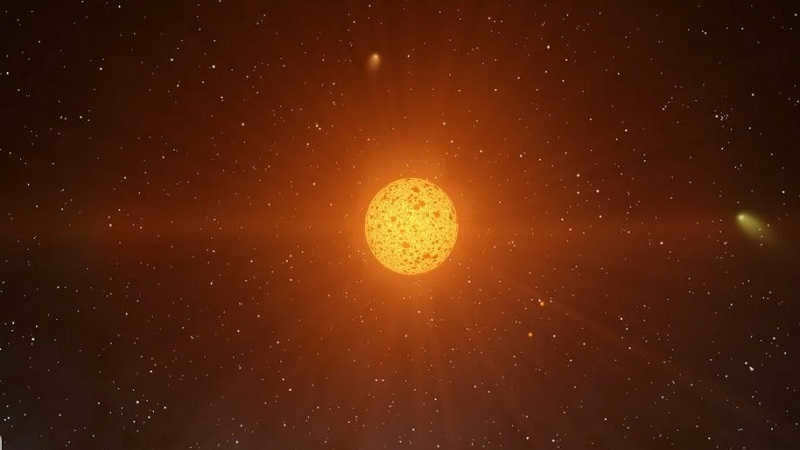
There is no denying the immense diversity present in our Universe. And it is this diversity that makes it such a beautiful and awe-inspiring place!
The celestial bodies, known as luminaries, are a remarkable manifestation of the vastness and uniqueness of the cosmos. They are among the primary entities that populate outer space.

Certainly, every object in our universe possesses a distinct set of parameters that set it apart from other objects. In fact, celestial bodies are no exception. Are you familiar with any properties of stars?
They share many similarities with one another, yet at the same time, each one could be considered unique. Scientists have been researching and observing these luminaries and their life cycles for a considerable amount of time. Through years of study, the main physical characteristics of stars and their interconnections have been identified.
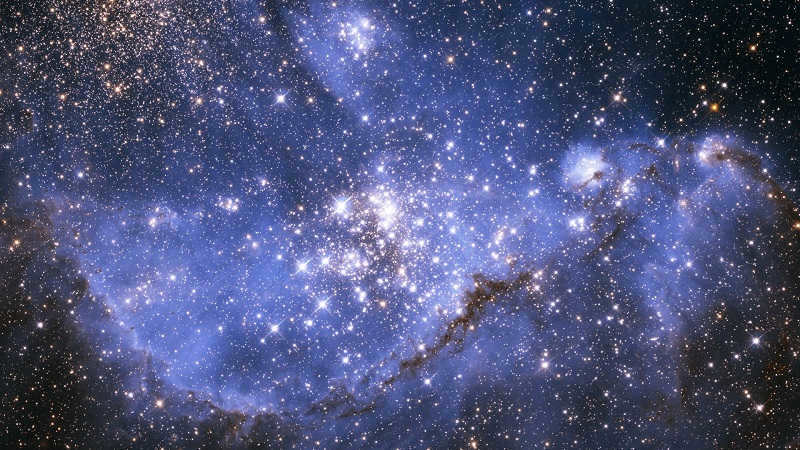
Therefore, the primary attributes of stars:
Brightness
When it comes to the fundamental attributes of stars, brightness is perhaps the most crucial factor. This quality allows even a casual observer to differentiate a celestial body in the sky. However, for a seasoned astronomer, this measurement enables them to categorize the body into a specific type.
Brightness is indicative of the relationship between the physical and chemical attributes of stars.
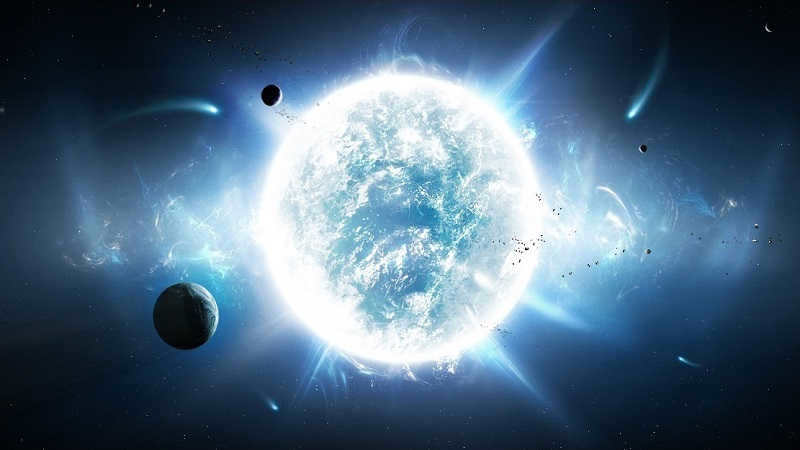
Temperature
The temperature of a star is influenced by its chemical composition, which can undergo changes over time. As a result, the internal processes also change, leading to alterations in other characteristics and parameters of the star.
Using the principles of thermodynamics, it is possible to compute the surface temperature of a star. This involves measuring the wavelength, which provides information about the star’s color and spectral class.
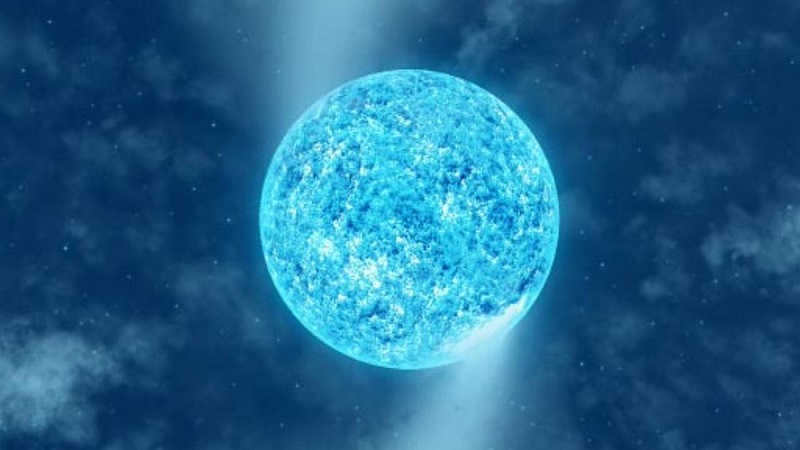
Size of Stars
Furthermore, all stars have varying sizes. However, the classification based on this factor is more straightforward. It is important to mention that the size of stars is measured in relation to the size of the Sun. Therefore, stars are categorized as small, medium, or large based on their mass at the time of formation.
In our universe, there are significantly fewer massive stars compared to others.
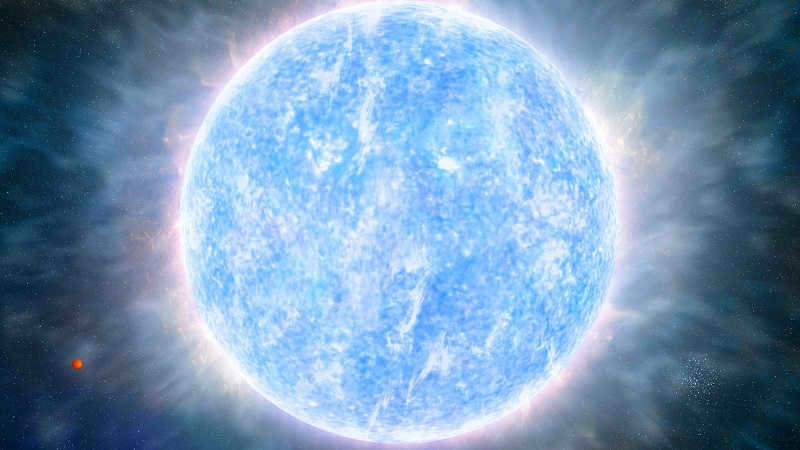
Stars’ Sizes
Ultimately, the sizes, more precisely, the radii of stars, exhibit significant variations. It is important to note that the radii of stars are not constant, as they undergo changes in their chemical composition during their evolution, which determines their future destiny. To put it simply, stars can either expand or contract, resulting in an increase or decrease in their size.
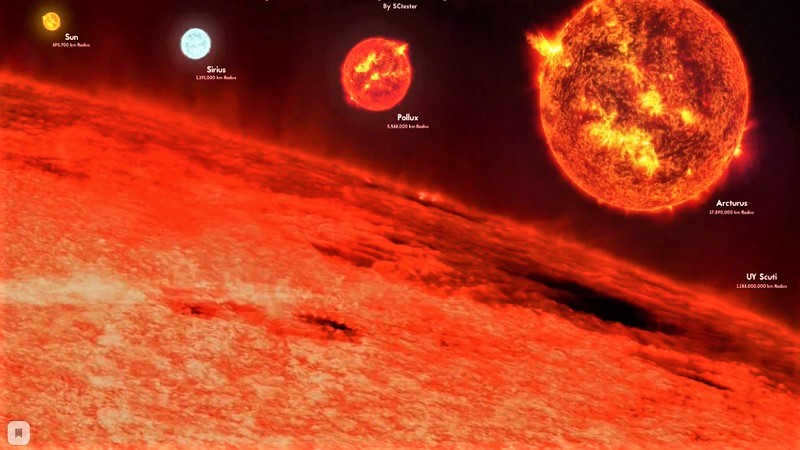
Stars and their interrelation: Understanding the Characteristics
The characteristics of stars are intricately interconnected and have a direct impact on the progression of stellar evolution. The Hertzsprung-Russell diagram provides the most precise explanation of this phenomenon.
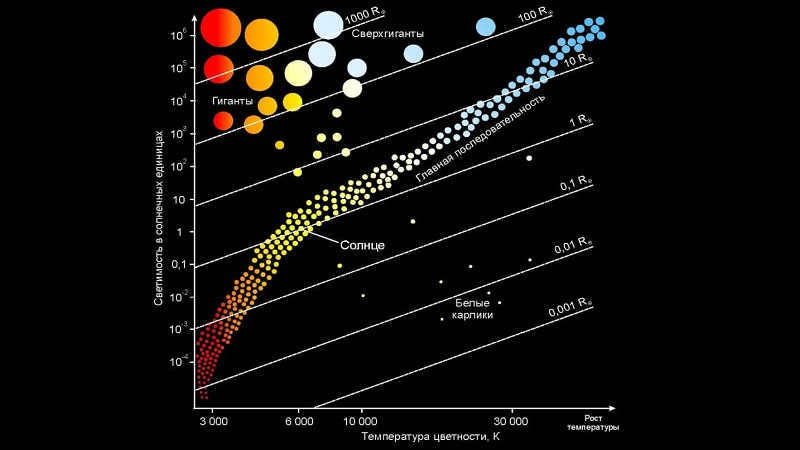
As depicted in the diagram, the stars are organized in a specific arrangement.
Naturally, the classification and depiction of stars extends beyond the mentioned magnitudes. There are other distinctive characteristics, such as distance and age.
When examining and contemplating an individual celestial body, one can gather a wealth of information about it. After all, stars are akin to people – they are abundant, yet each possesses its own uniqueness and irreplicability, following its own life trajectory.

- Homepage
- Stellar
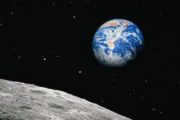
About stars
Stars can be considered as the most significant celestial bodies in the entire Universe as they encompass over 90% of all the matter that we observe.
Every star is an enormous sphere of gas that emits its own light, distinct from planets that reflect sunlight. Stars are inherently connected to the Sun, which happens to be the closest star to Earth.
All stars are located at a significant distance from us, and the distance to each of them, except for the Sun, is much greater than the distance from Earth to any of the planets in the solar system. The most direct method of determining distances to relatively close stars is based on measuring their apparent displacement against the more distant stars, which is caused by Earth’s motion around the Sun.
If the distance to stars is hundreds of parsecs or greater, their parallactic displacement becomes too small to detect. In these cases, alternative methods must be employed to determine their distances, often involving the analysis of stellar spectra.
For instance, Proxima Centauri, the nearest star to our solar system, is located approximately 1.3 parsecs away. The majority of stars that are easily visible to the naked eye are situated tens or hundreds of light years from Earth.
Stars exhibit variations in their mass, size, densities, luminosities, and chemical composition.
Let’s delve into these characteristics more comprehensively.
To ascertain the mass of stars, we examine the movements of stars in pairs and groups. Within these pairings and groupings, stars exert gravitational attraction on one another, resulting in their orbital motion around a shared center of mass (known as binary stars). The determination of a star’s mass is based on the principle of universal gravitation. Typically, stellar masses are measured in units relative to the mass of the Sun, which is approximately 2-10 30 kg. The majority of stars have masses ranging from 0.1 to 50 solar masses.
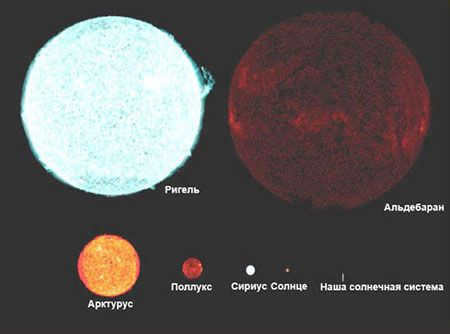
Comparison of Star Sizes
Stars exhibit a wide range of sizes, surpassing the variation in their masses. Consequently, smaller stars tend to possess higher matter densities, while larger stars have lower densities. Giant and supergiant stars can even have densities lower than that of air in normal, terrestrial conditions. The average density of solar matter is 1.4 times greater than water’s density. In comparison, white dwarfs are significantly denser than the Sun. For instance, 1 cm3 of material from Sirius B, a white dwarf star, weighs over 50 kg, and certain white dwarfs are even tens of times denser. However, neutron stars boast the highest density record, equivalent to that of atomic nuclei – a staggering 1014 g/cm3. Achieving such density would require compressing the entire Earth to a radius of only half a kilometer!
The stars not only differ in size, but also in luminosity. Luminosity refers to the amount of optical radiation emitted by a star every second, which is essentially the power of light energy. Typically, luminosity is measured in units of the Sun’s luminosity, which is approximately 3.8-10 26 W. The majority of observed stars have a luminosity that falls within the range of a few thousandths to a million times that of the Sun.
By studying the spectrum of stars, scientists can determine their chemical composition. Surprisingly, stars possess the same elements that are found on Earth. In fact, in almost all stars, hydrogen and helium make up over 98% of their mass, with hydrogen being approximately 2.7 times more massive than helium. The remaining 2% of mass is composed of other elements.
Stars are not transparent, so we can only analyze the chemical composition of their outer layers, which emit light that reaches us. However, through theoretical calculations, we can estimate the abundance of different elements within the stars’ interiors.
Based on their physical characteristics, stars can be classified into three main categories: normal stars, white dwarfs, and neutron stars.
Most visible stars fall into the category of normal stars, including those that can be observed with the naked eye or a small telescope. These stars are made up of a gas that behaves in a typical manner, known as an ideal gas. The pressure of this gas is directly proportional to its temperature and inversely proportional to the volume it occupies. By studying the physical laws that govern the behavior of gases, astronomers are able to calculate the density, pressure, and temperature within stars. This knowledge is crucial for understanding the structure and evolution of stars.
In stars with extremely high densities, the matter no longer follows the laws of an ideal gas. Instead, it takes on different properties and is referred to as degenerate gas. Degenerate gas can be found in white dwarfs and the cores of certain giant stars.
Neutron stars possess an incredibly high density that renders the existence of atomic nuclei impossible. Their composition primarily consists of neutrons, which are electrically neutral elementary particles. Neutrons typically exist alongside protons as part of atomic nuclei.
Gravitational force exerts its influence on the matter of all stars, causing compression. However, stars do not rapidly shrink due to the opposing pressure force exerted by their stellar matter. In regular stars, this pressure is a result of the elastic properties of a hot ideal gas. In white dwarfs, compression is prevented by the pressure exerted by a degenerate gas, which remains almost unaffected by the temperature. In the case of neutron stars, gravity is counteracted by the nuclear forces that operate between individual neutrons.
Red giants are stars where the temperature in the central region is so high that a reaction between helium nuclei occurs, resulting in the creation of carbon, a heavier element. This reaction also releases energy.
According to current scientific theories, most of the elements heavier than helium found in nature were formed through thermonuclear reactions inside stars or in reactions that occur during supernova explosions.
When a star is very young and nuclear reactions have not yet begun, its energy source may be the compression of stellar matter. This occurs when the matter becomes more compact under the force of its own gravity, causing the potential energy to decrease and transform into thermal energy.
Stars, like all other natural bodies, undergo constant changes throughout their existence. They are born, undergo a process of evolution, and eventually meet their demise.
The duration of a star’s life is determined by its mass. Stars that have a mass smaller than that of the Sun have a very frugal consumption of their nuclear “fuel” and can continue to shine for billions of years. As a result, stars with lower masses have not yet had the opportunity to age significantly. On the other hand, massive stars have a relatively short lifespan. For instance, stars with a mass of 15 times that of the Sun deplete their energy reserves within a mere 10 million years. In comparison, stars like our Sun can live for approximately a thousand times longer.
Throughout most of its lifespan, a star maintains a relatively constant temperature and size. However, once all of the hydrogen in the star’s central region is converted into helium, significant changes begin to occur. The star expands in size and although its surface temperature decreases, the amount of energy radiated by the star increases significantly. This transformation causes the star to become a red giant. The temperature in the central region rises to an astounding 100 million degrees Celsius, and within the dense helium core of such a star, the reaction between helium and carbon ignites.
During a specific phase in the evolution of a red giant, there may be a “reset” of the outer layers of this swollen star, resulting in the star being surrounded by a gas ring known as a planetary nebula. The star itself gradually shrinks and cools, eventually transforming into a white dwarf.
Our Sun will go through a similar path of evolution: in approximately 6-7 billion years, after going through the red giant phase, it will transform into a white dwarf.
Stars with a mass 1.4 times greater than that of the Sun will not be able to halt their contraction at the white dwarf stage at the end of their lives. The intense gravitational forces will compress them to such a density that matter will undergo “neutronization”: the interaction between electrons and protons will result in almost all of the star’s mass being made up of neutrons. This leads to the formation of a neutron star. Neutron stars can be formed when the most massive stars explode as supernovae. Calculations suggest that neutron stars are likely to be highly magnetized. By rapidly spinning on their axes, they can generate powerful beams of radio waves. Pulsars, which were discovered in the 1960s, are believed to be such rotating neutron stars that have formed after supernova explosions, emitting pulsed radio emissions.





